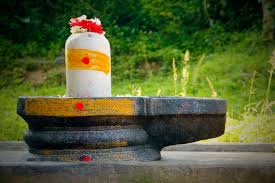In Virasaivism, Siva or Brahman or God is called 'Sthala'. He is 'Sthala' because he, like the sky or space (sthala - space) is limitless or infinite. Also the word 'sthala' can, etymologically, mean that from which the world emerges and evolves, in which it is stationed and into which it gets dissolved (stha = being stationed; la = getting dissolved). According to the doctrine 'Sat-sthala- siddhanta,' Siva divides himself into two aspects, Linga and Anga, the former being himself and the latter, the jiva. Both these, again, divide themselves into three further aspects;— (a) Linga into ista-linga, prana-linga and bhava-linga; (b) Anga into tyaga-anga, bhoga-anga and yoga-anga. When the jiva renounces his attachment to worldly objects, he is called 'tyaga-anga' and the linga given to him by his guru at the time of diksha or initiation is the 'ista-linga' which is the means of his upasana or worship. When due to the upasana of the ista-linga he is purified, then he enjoys the things of the world as the grace of Siva, becomes 'bhoga-anga' and experiences the 'prana-linga' (Siva's presence in his heart). When he progresses further, to very high states of consciousness in the sahasrara-cakra, he is called 'yoga-anga' and enjoys highest bliss by his identity with Siva, now called 'bhava-linga'.

No comments:
Post a Comment